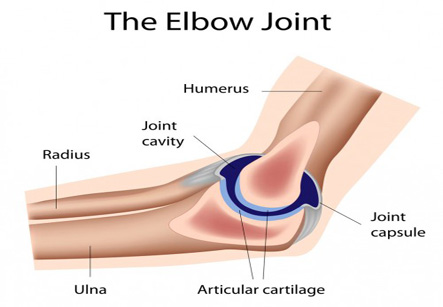Elbow Surgery
Introduction
Elbow trauma and diseases of elbow are very common orthopedic conditions. Elbow surgery is an important part of orthopedic practices.
The elbow is an important joint and has extensive use during daily activities. Therefore, it is subject to excessive work and can be a victim to various diseases and injury. There are numerous procedures available to deal with the problems arising in and around this joint.
Although, there are vast numbers of procedures for elbow surgery, some important and common operations are discussed.
Total elbow replacement
The commonest type of elbow surgery performed by orthopedic surgeons is a total elbow replacement (TER). It is done in cases of advanced and severe elbow arthritis in the elderly and for also for complex fractures of elbow after conservative approach of treatment fails. The patient is given general or regional anesthesia and a tourniquet or tight band is applied on the upper arm to reduce the blood flow to the joint. An incision of about six inches in length is made over the elbow to expose the bones. The elbow joint is dislocated and the bones are prepared for the prosthetic implants under aseptic precautions. Metal stems are inserted into the center of the bones making the joint after cement has been injected in them. After the cement becomes hard, the two stems are connected to each other with a pin.
Iran ranks among the top 10 countries in orthopedics and Iranian surgeons perform high quality orthopedic surgeries at highly affordable prices

Arthroplasty:
If the patient is unfit for surgery or has other risk factors for a joint replacement, the surgeon can perform a procedure called as an interposition arthroplasty. In this procedure, patients own soft tissues or an artificial tissue is placed between the ends of the bones forming the elbow joint. This usually eliminates the rubbing action of bone on bone and can provide pain relief in arthritis.
Synovectomy:
This surgery is recommended for patients of rheumatoid arthritis or other types of inflammatory arthritis after the conservative treatments have failed. . The inflamed synovial tissue is a common cause of elbow pain in rheumatoid arthritis patients. In this procedure, the damaged and inflamed synovial tissues in the elbow joint are removed arthroscopically (by a small camera) or by opening the joint. This procedure can reduce the pain.
Debridement:
A debridement is an arthroscopic procedure in which the bone chips, damaged cartilage, or bone spurs occurring in patients with osteoarthritis are removed.
Osteo-capsular Arthroplasty:
This surgery combines the benefits of debridement and synovectomy for elbow arthritis. It involves re-contouring of the damaged or deformed ends of bones in the joint.
Surgery for tennis elbow:
This surgery is only recommended when the patient is experiencing from excruciating pain that does not improve after six to twelve months of medical or other treatments. The procedure is performed under local anesthesia on an outpatient basis. The surgeon usually makes a small incision on the area of joint from which the damaged portion of the tendon can be removed and the healthy tissue can be reattached to the bone.
Surgery for an ulnar nerve entrapment:
Elbow surgery is also performed when a nerve is compressed, causing limitation of function and pain. This is most commonly performed for the ulnar nerve in the area around the elbow. Mostly, the nerve is moved from the backside to the front of the joint. This procedure is known as an anterior transposition. There are other types of the surgery in which the nerve can be repositioned under a muscle as in a sub-muscular transposition, inside the muscle as in an inter-muscular transposition, or on top of the muscle but just beneath the skin in a procedure called subcutaneous transposition. The procedure can be performed as an outpatient surgery or a day care surgery involving one-day hospitalization.
Biceps tendon-tear surgery:
The commonest type of elbow surgery performed by orthopedic surgeons is a total elbow replacement (TER).
A common injury particularly in the athletes is a biceps tendon tear. The surgery to repair biceps tendon tear is usually performed within two weeks after the injury. A longer delay can cause scarring and contracture of the tendon after which returning it to its normal position is very difficult. Various techniques are available such as implanting a device to which the tendon can be tied or drilling the bone to place anchoring sutures. Recovering after this procedure is particularly lengthy. Physiotherapy can improve the muscle function, but the patients are still advised to avoid pulling, lifting, or overusing the arm for many months.